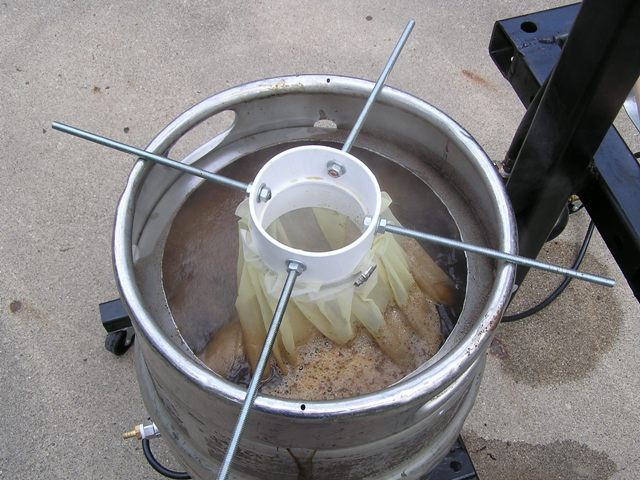elpresidente
Well-Known Member
Hello,
I am currently converting 2 sanke kegs over for the HLT and boil keggle to get another step closer to all grain, woohoo! I already have all the ss valves but I was wondering if there were any recommendations for the diptube setups for both?
I found a bunch of different ways that people have done it. My basic assumption for the HLT is to have a straight copper tube from the coupling with a 90 bend towards the middle/bottom. For the boil keggle I have seen the "bazooka t", the mesh hop stopper, the ss brillo pad approach, etc. Which route should I go? I like the bazooka t idea, it looks pretty clean and simple...I just want something that will not give me too much of a hassle and is efficient because I read a few threads where people have had trouble from hops getting clogged, etc. Any input appreciated, thanks!
I am currently converting 2 sanke kegs over for the HLT and boil keggle to get another step closer to all grain, woohoo! I already have all the ss valves but I was wondering if there were any recommendations for the diptube setups for both?
I found a bunch of different ways that people have done it. My basic assumption for the HLT is to have a straight copper tube from the coupling with a 90 bend towards the middle/bottom. For the boil keggle I have seen the "bazooka t", the mesh hop stopper, the ss brillo pad approach, etc. Which route should I go? I like the bazooka t idea, it looks pretty clean and simple...I just want something that will not give me too much of a hassle and is efficient because I read a few threads where people have had trouble from hops getting clogged, etc. Any input appreciated, thanks!





![Craft A Brew - Safale S-04 Dry Yeast - Fermentis - English Ale Dry Yeast - For English and American Ales and Hard Apple Ciders - Ingredients for Home Brewing - Beer Making Supplies - [1 Pack]](https://m.media-amazon.com/images/I/41fVGNh6JfL._SL500_.jpg)






















































